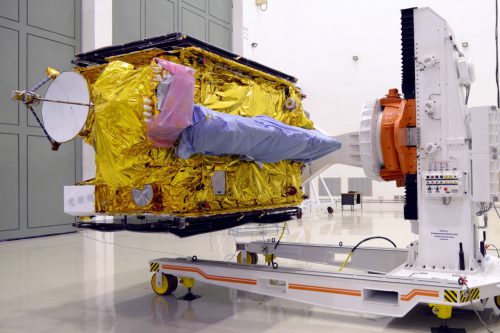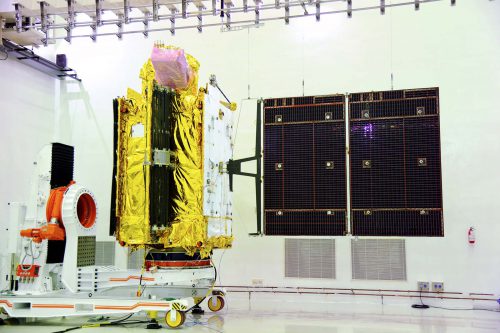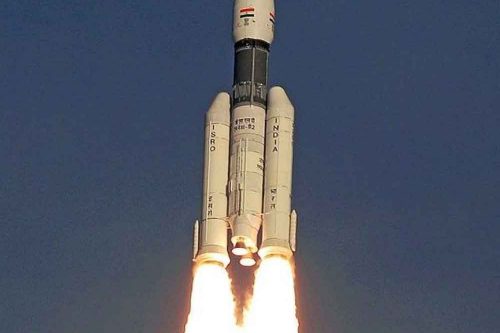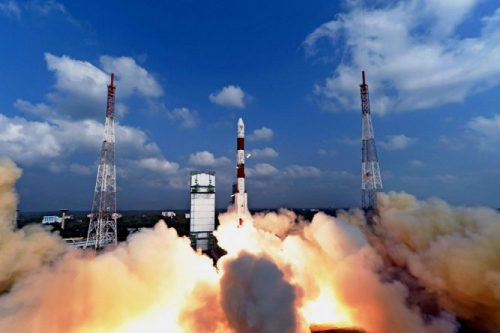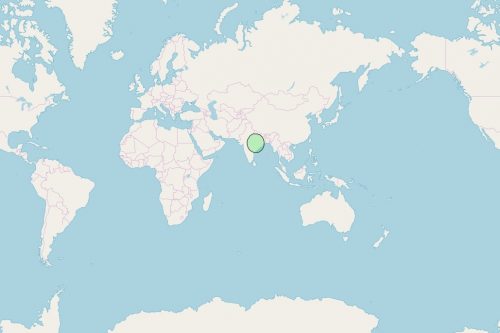
Back to selection
GEO Satellite
GSAT-6 (INSAT-4E) GEO
succesfull
Launch date
27 August 2015
Country

Purpose
Communication
Position
83° West
Manufacturer
Indian Space Research Organization (ISRO)
Operator
Indian Space Research Organization (ISRO)
Launch operator
Indian Space Research Organization (ISRO)
Launch vehicle
GSLV
Expected lifetime
15 Years
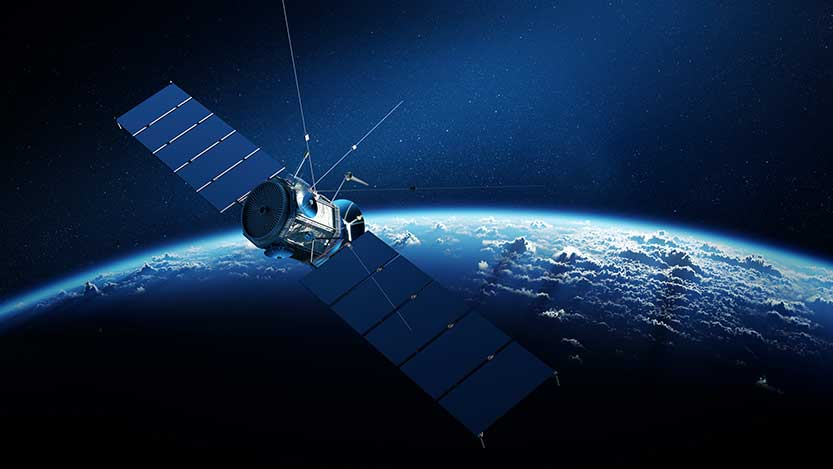
Region
Asia Pacific Region
GSAT-6 was the 25th geostationary communication satellite of India built and operated by satellite operator by ISRO and 12th in the GSAT-series. Five of GSAT-6’s predecessors were launched by GSLV during 2001, 2003, 2004, 2007 and 2014 respectively. After its commissioning, GSAT-6 joined the group of India’s other operational geostationary satellites.
GSAT-6 satellite provides communication through S-band payload with five spot beams covering whole India for user links and C-band with one beam. The cuboid shaped GSAT-6 had a lift-off mass of 2,117kgs, including the propellants weight of 1,132kgs. One of the advanced features of GSAT-6 satellite is its 6m S-Band Unfurlable Antenna. This is the largest satellite antenna realized by manufacturer ISRO. This antenna was utilized for five spot beams over the Indian main land. The spot beams exploit the frequency reuse scheme to increase frequency spectrum utilization efficiency.
GSAT-6 was successfully launched on August 27th, 2015 on ISRO’s GSLV-D6 MK II launch vehicle flying from the Satish Dhawan Space Centre in India.
GEO Satellite
GSAT-6 (INSAT-4E)
succesfull
GEO Satellite
GSAT-6 (INSAT-4E)
succesfull
